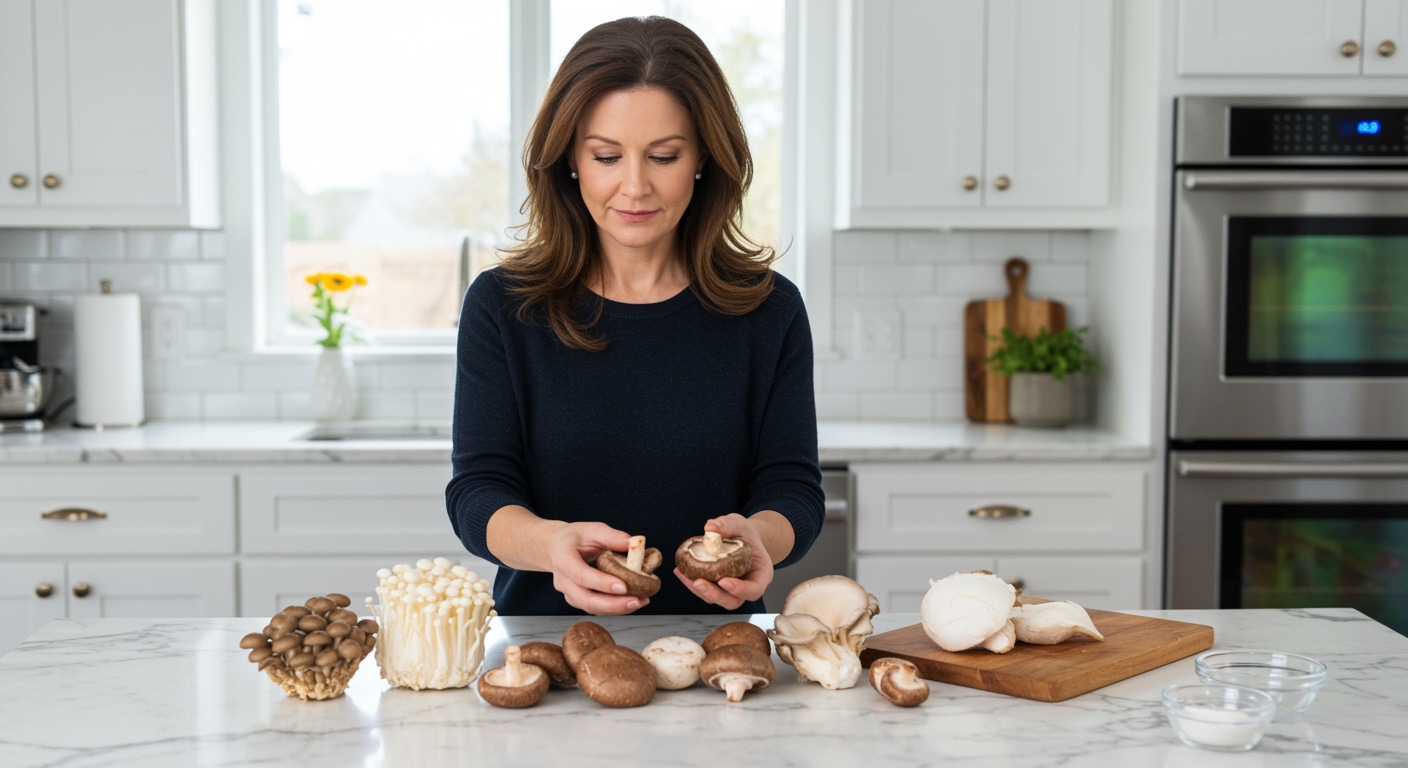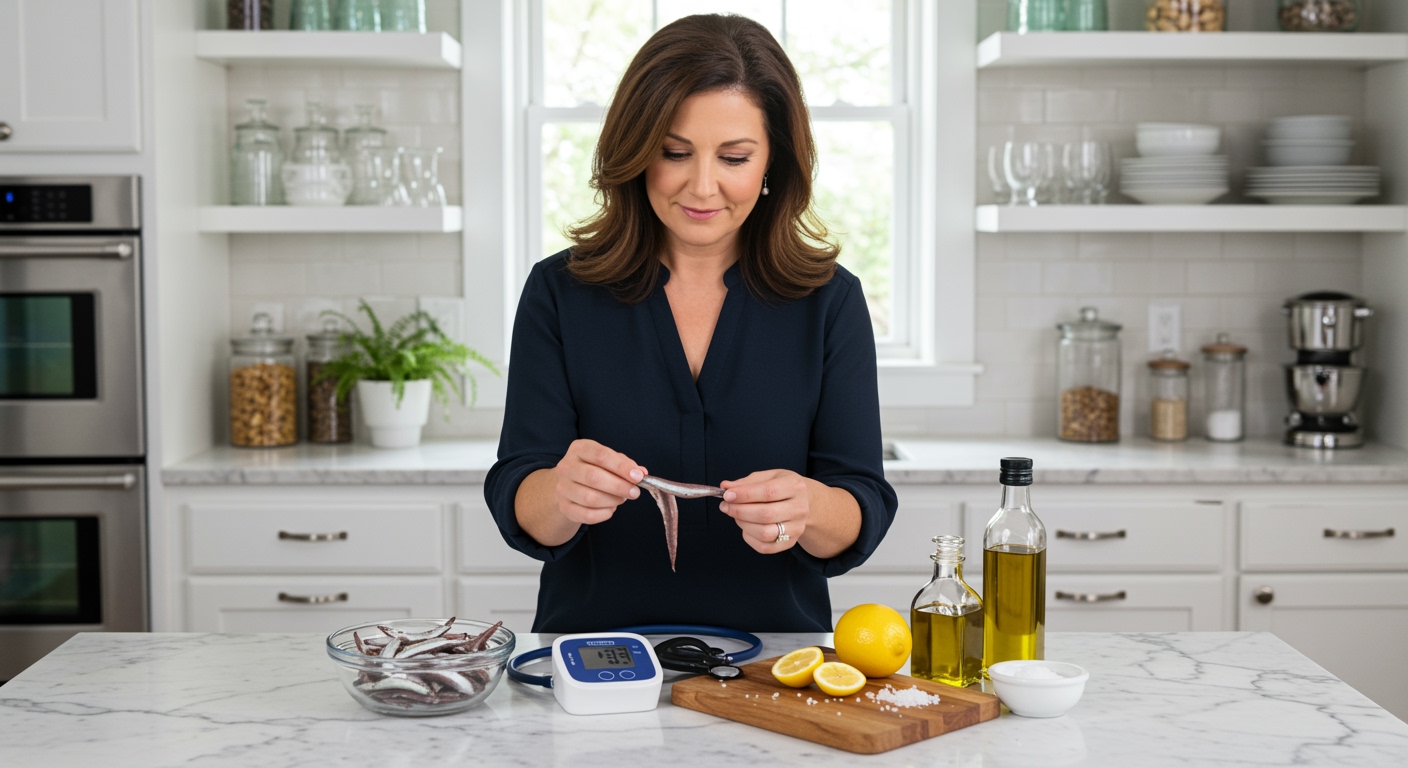✪ Key Takeaway: Mushrooms contain potassium and compounds that may help raise low blood pressure naturally through improved circulation.
Introduction
You check your blood pressure and the numbers stare back at you like a puzzle you cannot solve.
Low blood pressure leaves you feeling dizzy, tired, and searching for natural solutions that actually work without side effects.
Hi, I am Abdur, your nutrition coach and today I am going to explain how mushrooms can impact your low blood pressure and whether they deserve a place on your plate.
What Makes Mushrooms Special for Blood Pressure?
Mushrooms pack a unique combination of nutrients that work together to support your cardiovascular system.
The potassium content in mushrooms helps balance sodium levels in your body, which directly affects blood pressure regulation.
One cup of sliced mushrooms provides about 300 milligrams of potassium, roughly 8 percent of your daily needs.
This mineral works by helping your kidneys remove excess sodium through urine, reducing the strain on your blood vessels.
Mushrooms also contain bioactive compounds called beta-glucans that support healthy circulation by improving blood vessel function.
These compounds help your blood vessels relax and expand more easily, allowing blood to flow with less resistance.
The low sodium content in fresh mushrooms makes them an excellent choice for people managing blood pressure issues naturally.
✪ Fact: Shiitake mushrooms contain eritadenine, a compound that may help regulate cholesterol and support heart health.
How Do Different Mushroom Types Affect Blood Pressure?
Not all mushrooms offer the same benefits for your blood pressure management.
Shiitake mushrooms stand out as the most researched variety for cardiovascular health due to their high eritadenine content.
This compound helps lower cholesterol levels, which indirectly supports better blood pressure by reducing arterial stiffness.
Portobello mushrooms provide the highest potassium content among common varieties, making them particularly useful for sodium balance.
Oyster mushrooms contain lovastatin, a natural compound that helps manage cholesterol levels and supports overall heart health.
Button mushrooms, while lower in special compounds, still provide decent amounts of potassium and are easily accessible year-round.
The key lies in eating a variety of mushrooms regularly rather than relying on just one type for maximum benefits.
✪ Pro Tip: Combine different mushroom varieties in one meal to maximize their blood pressure benefits.
Can Mushrooms Actually Raise Low Blood Pressure?
The relationship between mushrooms and low blood pressure is more complex than most people realize.
While mushrooms contain compounds that support healthy blood pressure, they work by normalizing circulation rather than directly raising numbers.
The potassium in mushrooms helps your blood vessels function more efficiently, which can improve blood flow to vital organs.
This improved circulation often helps people with low blood pressure feel more energetic and less dizzy throughout the day.
The B vitamins in mushrooms, particularly B12 and folate, support red blood cell production and oxygen transport.
Better oxygen delivery to your tissues can help reduce the fatigue and weakness commonly associated with low blood pressure.
However, mushrooms alone cannot cure severely low blood pressure that requires medical intervention and professional monitoring.
✪ Note: Always consult your doctor before using food as medicine for blood pressure management.
What Is the Best Way to Eat Mushrooms for Blood Pressure?
The preparation method you choose can significantly impact how much benefit you get from mushrooms.
Cooking mushrooms actually increases the bioavailability of many beneficial compounds compared to eating them raw.
Heat breaks down the tough cell walls in mushrooms, making nutrients like potassium and beta-glucans easier for your body to absorb.
Sautéing mushrooms in a small amount of olive oil helps your body absorb fat-soluble vitamins while preserving water-soluble nutrients.
Avoid adding excessive salt during cooking, as this can counteract the blood pressure benefits you are trying to achieve.
Aim for at least half a cup of cooked mushrooms three to four times per week to see potential cardiovascular benefits.
You can add mushrooms to soups, stir-fries, omelets, or eat them as a meat substitute in various dishes for consistent intake.
✪ Pro Tip: Pair mushrooms with garlic and herbs instead of salt to enhance flavor while supporting heart health.
Are There Any Risks with Mushrooms and Low Blood Pressure?
Most people can safely include mushrooms in their diet without worrying about negative effects on blood pressure.
However, some individuals taking blood pressure medications should monitor their response when increasing mushroom intake significantly.
The potassium in mushrooms can interact with certain medications, particularly ACE inhibitors and potassium-sparing diuretics.
People with kidney problems need to be cautious about potassium intake from all sources, including mushrooms.
Wild mushrooms should always be avoided unless you are absolutely certain of their safety and identification.
Stick to commercially grown varieties from reputable sources to avoid any risk of poisoning or adverse reactions.
Start with small amounts if you are new to eating mushrooms regularly and pay attention to how your body responds over time.
✪ Note: Always inform your healthcare provider about significant dietary changes when managing blood pressure.
The Bottom Line
Mushrooms can be a valuable addition to your diet if you are dealing with low blood pressure, thanks to their potassium content and circulation-supporting compounds.
Food is medicine, but it works best when combined with smart lifestyle choices and professional guidance.
I would love to hear about your experience with mushrooms and blood pressure management, so please share your thoughts or questions in the comments below.
References
At NutritionCrown, we use quality and credible sources to ensure our content is accurate and trustworthy. Below are the sources referenced in creating this article:
- PMC: Mushrooms and Cardiovascular Health
- Frontiers in Pharmacology: Bioactive Compounds in Mushrooms
- Scholars Archive: Mushroom Nutrition Research





